Comments / Questions (18)
![]() Wanda wrote:
Wanda wrote:
Please could you send me a link for the video. I cannot understand the right front pattern instruction re the buttonhole band. Many thanks
14.06.2025 - 23:00DROPS Design answered:
Dear Wanda, all relevant videos for making this pattern can be found in the "Videos" section at the top of the pattern. You can ask us specific questions about the buttonhole band and we can try to explain it in different words. Happy crochetting!
15.06.2025 - 23:52
![]() Mariana wrote:
Mariana wrote:
I can’t understand how can you change colors in this pattern on the left front side, as by my understanding the threads will show when you change colors. The tutorial video is not explanatory for a stripe this wide
08.05.2025 - 13:23DROPS Design answered:
Dear Mariana, for stripes in treble crochet, we change the colour right when the last yarn over is left of the last stitch in the previous colour and pass the thread through the 2 remaining loops in the hook. As explained in the video:" If there is a longer distance between the stripes make sure to twist the new color around the previous one when you reach the edge, so that the old color follow the side of your work until you will use it. If this is a sweater the threads will run along the inside of side seam." Happy crochetting!
10.05.2025 - 23:53
![]() Valerie Kurppa wrote:
Valerie Kurppa wrote:
HI.when /how do you crochet : A1 ..A2..A3..A4? No explanation whatsoever... Confusing .....
06.02.2025 - 12:16DROPS Design answered:
Dear Mrs Kurppa, this could help you understanding how to read crochet diagrams. Each symbol is matching a stitch, just work it as explained under diagram text - written pattern explains when to work which diagram. Happy crocheting!
06.02.2025 - 16:44
![]() Angélique Beaujean wrote:
Angélique Beaujean wrote:
Bonjour Je ne comprends pas les explications. J ai bien fais le dos avec les deux devant et ensuite il faut refaire deux devants. Je ne comprend pas ou les coudre par la suite puisque les devants ont déjà été fait avant ! Pouvez vous m aidez ? Merci. Cordialement. Angelique
19.01.2025 - 00:26DROPS Design answered:
Bonjour Angélique, dans ce modèle, on crochète chaque pièce séparément: autrement dit, on crochète d'abord le dos, puis chacun des 2 devants et on assemble ces différentes pièces ensuite entre elles par des coutures. On crochète toutes les pièces (même les manches) de bas en haut. Bon crochet!
20.01.2025 - 07:58
![]() Liesbeth wrote:
Liesbeth wrote:
Klopt het dat de bovenste toer van A.2, de samengehaakte stokjes, onderaan het vestje de achtste toer is en dat deze toer daarna elke twaalfde toer herhaald word?
20.10.2024 - 21:53
![]() Piia Berg wrote:
Piia Berg wrote:
Hej! Jag har virkat bakstycket i storlek L (mäter 66cm). Axeln på bakstycket avslutades med 2 ränder blå vind. Nu virkar jag höger framstycke som också ska bli 66 cm, så då avslutas den axeln också med 2 ränder blå vind? Det betyder att det kommer bli totalt 4 ränder blå vind på axeln när det sys ihop...är det tänkt så? Ska jag göra annorlunda? Bilderna på er webb är inte så tydliga, men jag tror den visar bara 2 ränder högst upp på axeln?
27.06.2024 - 22:59DROPS Design answered:
Hei Piia. Er heklefastheten i høyden overholdt (10 rader)? Da vil man kun hekle halve diagrammet i høyden når man er kommet til 66 cm. Da hekler man 2 rader av diagrammet til slutt, både foran og bak = 4 rader, som blir likt med resten av stripene. Bildet viser str. S / 62 cm og viser ikke samme #avslutningsfargene" som str. L. mvh DROPS Design
01.07.2024 - 10:52
![]() Els Roelandt wrote:
Els Roelandt wrote:
Bij het minderen aan de V hals staat in het patroon: minder 1 steek aan de binnenkant van de 7 voorbiessteken. Haak je dan eerst de 7 biefstukken en de daaropvolgende steek minderen?
01.03.2024 - 18:15DROPS Design answered:
Dag Els,
Ja, het is de bedoeling dat je de minderingen vlak naast de biessteken maakt, dus zodat de 7 biessteken in tact blijven en mooi doorlopen.
05.03.2024 - 22:54
![]() Els Roelandt wrote:
Els Roelandt wrote:
Ik begrijp niet hoe ik verder moet met het achterpand: werk is nu 63 cm,maat L. Ik moet beginnen aan re schouder: 28 stokjes haken, dan 2 st samenhaken dus in totaal 29 stokjes. Haak ik dan heen en weer tot de gevraagde lengte of miet ik in rij 4 A2 nogmaals 1 keer minderen?
29.02.2024 - 19:40DROPS Design answered:
Dag Els,
Ja, in totaal inderdaad 29 stokjes en je haakt dan heen en weer in stokjes tot de gevraagde lengte.
01.03.2024 - 07:27
![]() Sophie Chermin wrote:
Sophie Chermin wrote:
Hallo, hoeveel garen heb ik nodig van Kid Silk als ik het effen wil maken?
10.11.2023 - 17:46DROPS Design answered:
Dag Sophie,
Dat is mij helaas niet bekend. Om een idee daarvan te krijgen zou je kunnen kijken naar een vergelijkbaar werkstuk waarin Kid-Silk gecombineerd wordt met een garen uit garengroep B.
12.11.2023 - 17:40
![]() Livia wrote:
Livia wrote:
Bonjour, Fidèle cliente, j'aimerais faire ce modèle mais en 1 couleur Puna et 1 de Kid Silk Connaissez vous la juste quantité de pelotes de 25g de kid silk pour les tailes M et L ? Par avance merci !
30.10.2023 - 10:51DROPS Design answered:
Bonjour Livia, malheureusement non car le gilet a été tricoté avec des rayures, n'hésitez pas à contacter votre magasin DROPS, on saura vous conseiller, même par mail ou téléphone. Bon tricot!
30.10.2023 - 18:02
Lakeside Watercolour Cardigan#lakesidewatercolourcardigan |
||||||||||
 |
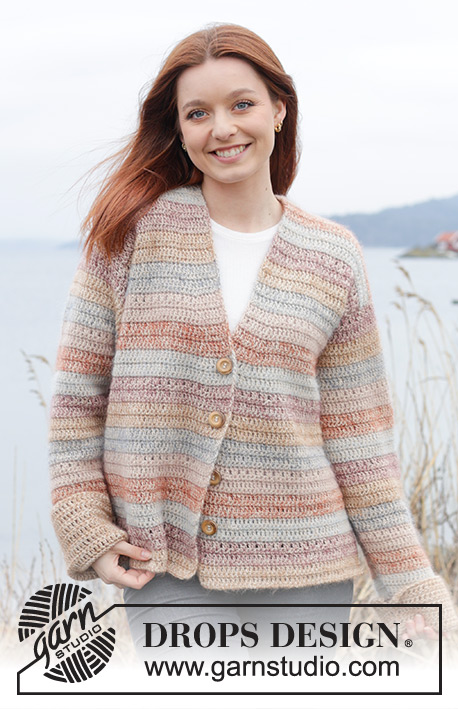 |
|||||||||
Crocheted jacket in DROPS Puna and DROPS Kid-Silk. The piece is worked bottom up with stripes, split in sides, V-neck and fold-up sleeves. Sizes S - XXXL.
DROPS 245-29 |
||||||||||
|
------------------------------------------------------- EXPLANATIONS FOR THE PATTERN: ------------------------------------------------------- CHAIN STITCH: If you work outermost on the hook the chain stitch will often be too tight; 1 chain stitch should be as long as 1 treble/double crochet is wide. CROCHET INFORMATION: On each row of treble crochets, replace the first treble crochet with 3 chain stitches. The last treble crochet on the row is worked in the chain stitch at the beginning of the previous row. On each row of double crochets, replace the first double crochet with 1 chain stitch. The last double crochet on the row is worked in the 3rd chain stitch at the beginning of the previous row. PATTERN: See diagrams A.1 and A.2. Double crochets rows are worked from the wrong side, treble crochets rows from the right side A.3 = right band, A.4 = left band. NOTE: If row 4 in A.2 does not fit when decreasing for the neck, work as described under DECREASE TIP-2. STRIPES: * Work A.1 with 1 strand DROPS Puna and 1 strand DROPS Kid-Silk colour almond. Work A.2 with 1 strand DROPS Puna and 1 strand DROPS Kid-Silk colour mauve. Work A.1 with 1 strand DROPS Puna and 1 strand DROPS Kid-Silk colour blue mist. Work A.1 with 1 strand DROPS Puna and 1 strand DROPS Kid-Silk colour rust. Work A.2 with 1 strand DROPS Puna and 1 strand DROPS Kid-Silk colour powder. Work A.1 with 1 strand DROPS Puna and 1 strand i DROPS Kid-Silk colour blue wind *, work from *-* to finished length. DECREASE TIP-1 (armholes): Decrease on a double crochet row. Beginning of row: Replace the number of stitches to decrease with 1 slip stitch in stitch in the stitch below. End of row: Turn when the number of decreases remains on the row (do not work these stitches). DECREASE TIP-2 (neckline): All decreases are worked from the right side. Decrease 1 treble crochet on row 2 or 4 in A.1/row 2 in A.2 as follows: Work 2 treble crochets together, i.e., work 1 treble crochet in next stitch, wait with last yarn over and pull-through, work 1 treble crochet in next stitch and pull last yarn over through all 3 loops on the hook. Decrease 1 treble crochet on row 4 in A.2 as follows: Work 1 treble crochet in the stitch where you usually work 2 stitches, skip the next stitch as usual. NOTE: Where 2 stitches don’t fit into 1 stitch on row 4 in A.2 when decreasing for the neck, work 1 treble crochet in the stitch below (instead of 2) and skip 1 stitch. INCREASE TIP: Increase 1 stitch, inside 1 stitch on each side, by working 2 stitches in the same stitch. BUTTONHOLES: Work the buttonholes on the right band from the right side (on a row of treble crochets): Work 1 treble crochet in each of the first 2 stitches, skip 1 stitch, work 2 treble crochets in the next stitch, continue as before. Work buttonholes when the piece measures: S: 10, 18, 26 and 34 cm. M: 11, 19, 27 and 35 cm. L: 12, 20, 28 and 36 cm. XL: 10, 19, 28 and 37 cm. XXL: 11, 20, 29 and 38 cm. XXXL: 12, 21, 30 and 39 cm. ------------------------------------------------------- START THE PIECE HERE: ------------------------------------------------------- JACKET - SHORT OVERVIEW OF THE PIECE: The piece is worked bottom up in sections, back and forth. The piece is then sewn together. BACK PIECE: Work 70-76-84-88-98-108 CHAIN STITCHES – read description above, with hook size 5 mm, 1 strand DROPS Puna and 1 strand DROPS Kid-Silk colour almond. Work as follows from the wrong side: 1 double crochet in 2nd chain stitch from the hook, then 1 double crochet in each chain stitch = 69-75-83-87-97-107 double crochets and 1 chain stitch (chain stitch on this row is not counted as 1 double crochet, i.e., this chain stitch is not worked). Read CROCHET INFORMATION and work STRIPES back and forth – read description above (first row in A.1 already worked – start on row 2). The stripes are repeated in height to finished length – NOTE: On row 4 in A.2, work A.2 until there is 1 stitch left on the row, finish with 1 treble crochet in the last stitch. REMEMBER THE CROCHET TENSION! When the piece measures 42-43-44-45-46-47 cm, decrease 3-4-4-4-7-8 stitches for the armholes in each side – read DECREASE TIP-1 = 63-67-75-79-83-91 stitches. Continue the pattern – remember that on row 4 in A.2, work A.2 until there is 1 stitch left, finish with 1 treble crochet in the last stitch. When the piece measures 59-61-63-65-67-69 cm and the next row is from the right side, work the right shoulder as follows: Work 22-24-28-28-30-34 treble crochets, work 2 treble crochets together – read DECREASE TIP-2 = 23-25-29-29-31-35 shoulder stitches. Work back and forth over these shoulder stitches until the piece measures 62-64-66-68-70-72 cm. Cut and fasten the strands. Work the left shoulder from the right side: Skip the first 15-15-15-19-19-19 stitches after the right shoulder (neck), work 2 treble crochets together, work 1 treble crochet in each of the remaining 22-24-28-28-30-34 stitches = 23-25-29-29-31-35 shoulder stitches. Work until the piece measures 62-64-66-68-70-72 cm. Cut and fasten the strands. RIGHT FRONT PIECE: Work 43-45-49-51-55-61 chain stitches with hook size 5 mm, 1 strand DROPS Puna and 1 strand DROPS Kid-Silk colour almond. Work as follows from the wrong side: 1 double crochet in the 2nd chain stitch from the hook, then 1 double crochet in each chain stitch = 42-44-48-50-54-60 double crochets and 1 chain stitch (chain stitch on this row is not counted as 1 double crochet). Work as follows from the right side (first row in the diagrams already worked – start on row 2): Work A.3 over the first 7 stitches (band), A.1 over the remaining stitches. Continue this pattern back and forth with stripes, in the same way as on the back piece – remember the BUTTONHOLES – read description above. NOTE: On row 4 in A.2, work A.2 until there is 1 stitch left, finish with 1 treble crochet in the last stitch. When you have worked to 1 cm after the last buttonhole, decrease for the V-neck and armholes. Read V-NECK and ARMHOLE before continuing. V-NECK: When the piece measures 35-36-37-38-39-40 cm, decrease 1 stitch for the V-neck inside the 7 band stitches (decrease from the right side on a row of treble crochets) – read DECREASE TIP-2. Decrease like this on each row of treble crochets 9-8-8-10-9-10 times. NOTE: When decreasing, work row 4 in A.2 as described in DECREASE TIP-2 ARMHOLE: At the same time, when the piece measures 42-43-44-45-46-47 cm, decrease 3-4-4-4-7-8 stitches for the armhole – remember DECREASE TIP-1. After all the decreases for V-neck and armhole, there are 30-32-36-36-38-42 stitches. Continue back and forth until the piece measures 62-64-66-68-70-72 cm. Continue working A.3 back and forth over the band (do not work the remaining 23-25-29-29-31-35 stitches) for a further 8-8-8-9-9-9 cm = neck, which will be stretched slightly when sewn onto the neckline. Cut and fasten the strands. LEFT FRONT PIECE: Work 43-45-49-51-55-61 chain stitches with hook size 5 mm, 1 strand DROPS Puna and 1 strand DROPS Kid-Silk colour almond. Work as follows from the wrong side: 1 double crochet in the 2nd chain stitch from the hook, then 1 double crochet in each chain stitch = 42-44-48-50-54-60 double crochets and 1 chain stitch (chain stitch on this row is not counted as 1 double crochet). Work as follows from the right side (first row in the diagrams already worked – start on row 2): Work A.1 until there are 7 stitches left, work A.4 over these stitches (band). Continue this pattern back and forth with stripes, in the same way as on the right front piece. NOTE: On row 4 in A.2, work A.2 until there is 1 stitch left before the band, work 1 treble crochet then the band. Now decrease for the V-neck and armholes. Read V-NECK and ARMHOLE before continuing. V-NECK: When the piece measures 35-36-37-38-39-40 cm, decrease 1 stitch for the V-neck inside the 7 band stitches (decrease from the right side on a row of treble crochets) – remember DECREASE TIP-2. Decrease like this on each row of treble crochets 9-8-8-10-9-10 times ARMHOLE: At the same time, when the piece measures 42-43-44-45-46-47 cm, decrease 3-4-4-4-7-8 stitches for the armhole – remember DECREASE TIP-1. After all the decreases for V-neck and armhole, there are 30-32-36-36-38-42 stitches. Continue back and forth until the piece measures 62-64-66-68-70-72 cm. Work A.4 back and forth over the band (do not work the remaining 23-25-29-29-31-35 stitches) for a further 8-8-8-9-9-9 cm = neck, which will be stretched slightly when sewn onto the neckline. Cut and fasten the strands. SLEEVES: Work 40-40-42-42-44-46 chain stitches with hook size 5 mm, 1 strand DROPS Puna and 1 strand DROPS Kid-Silk colour almond. Work as follows from the wrong side: 1 double crochet in the 2nd chain stitch from the hook, 1 double crochet in each of the remaining chain stitches = 39-39-41-41-43-45 double crochets and 1 chain stitch (the chain stitch on this row is not counted as 1 double crochet). Work A.1 back and forth (start on row 2 in the diagram). When the sleeve measures 10 cm, insert 1 marker. The sleeve is now measured from here. Work stripes in the same way as on the body but start with A.2 and 1 strand DROPS Puna and 1 strand DROPS Kid-Silk colour mauve – NOTE: On row 4 in A.2, work A.2 until there is 1 stitch left, finish with 1 treble crochet in the last stitch. When the sleeve measures 13-12-13-11-13-11 cm from the marker, increase 1 stitch on each side – read INCREASE TIP. Increase like this every 6-5-4-4-3-3 cm a total of 7-8-9-10-11-11 times on each side = 53-55-59-61-65-67 stitches. NOTE: Work row 4 in A.2 in the same way as before – work until there is 1 stitch left, finish with 1 treble crochet in the last stitch. When the sleeve measures 53-51-49-49-47-44 cm from the marker, insert 1 marker in each side. Continue working until the sleeve measures 55-54-52-52-52-50 cm from the marker at the bottom (whole sleeve measures approx. 65-64-62-62-62-60 cm from the cast-on edge). Cut and fasten the strands. Work the other sleeve in the same way. ASSEMBLY: Sew the shoulder seams. Sew the side seams from the armholes down, leaving a split of 11 cm at the bottom. Sew the sleeve seams from the cuff to the markers at the top of the sleeve – sew edge to edge so the seam is flat. Make sure the seam does not show when the 10 cm cuff is turned up. There is a split of 2-3-3-3-5-6 cm at the top of the sleeve. Stretch the sleeve cap slightly so it fits the armhole and sew in. Sew the openings at the bottom of the armholes – see sketch. Sew the neck pieces together mid-back and sew to the neckline. Sew the buttons onto the left band. Fold up 10 cm on each sleeve and fasten with a couple of stitches in each side. |
||||||||||
Diagram explanations |
||||||||||
|
||||||||||
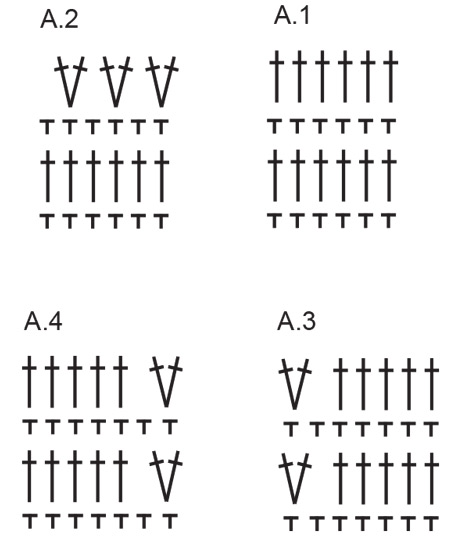
|
||||||||||
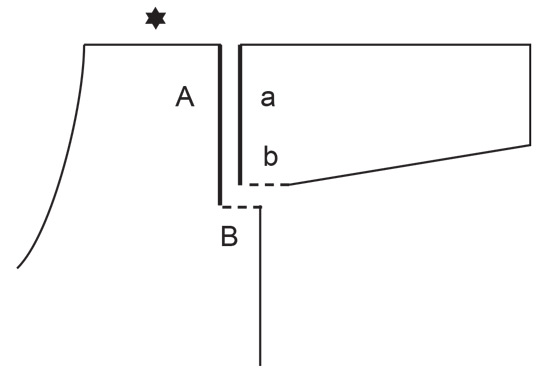
|
||||||||||
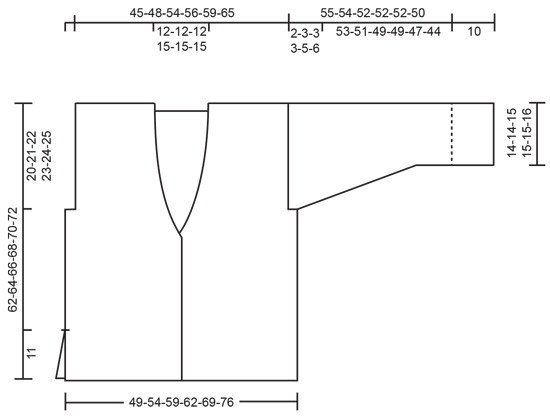
|
||||||||||
Have you finished this pattern?Tag your pictures with #dropspattern #lakesidewatercolourcardigan or submit them to the #dropsfan gallery. Do you need help with this pattern?You'll find 12 tutorial videos, a Comments/Questions area and more by visiting the pattern on garnstudio.com. © 1982-2025 DROPS Design A/S. We reserve all rights. This document, including all its sub-sections, has copyrights. Read more about what you can do with our patterns at the bottom of each pattern on our site. |
||||||||||







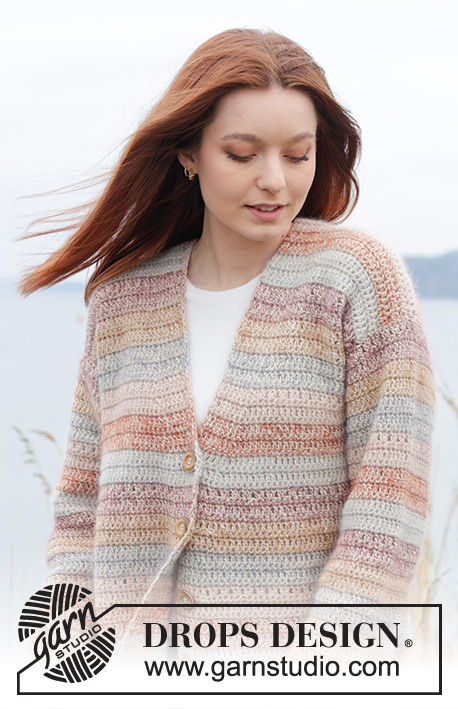
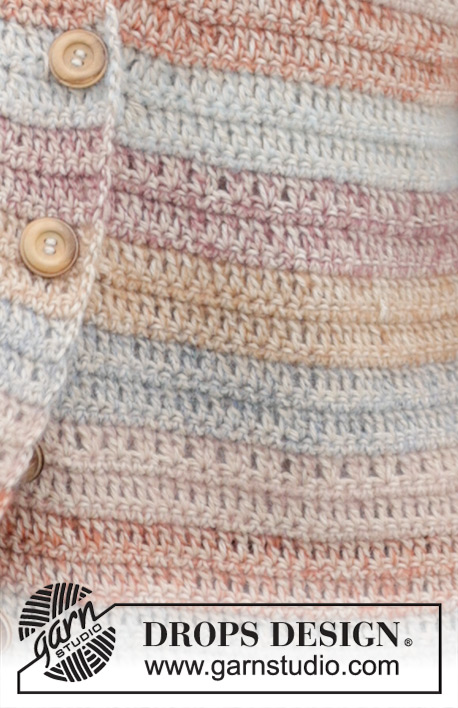

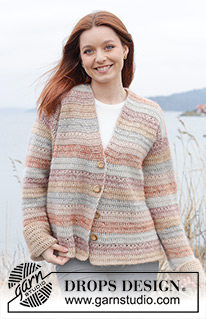

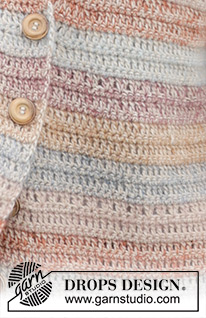

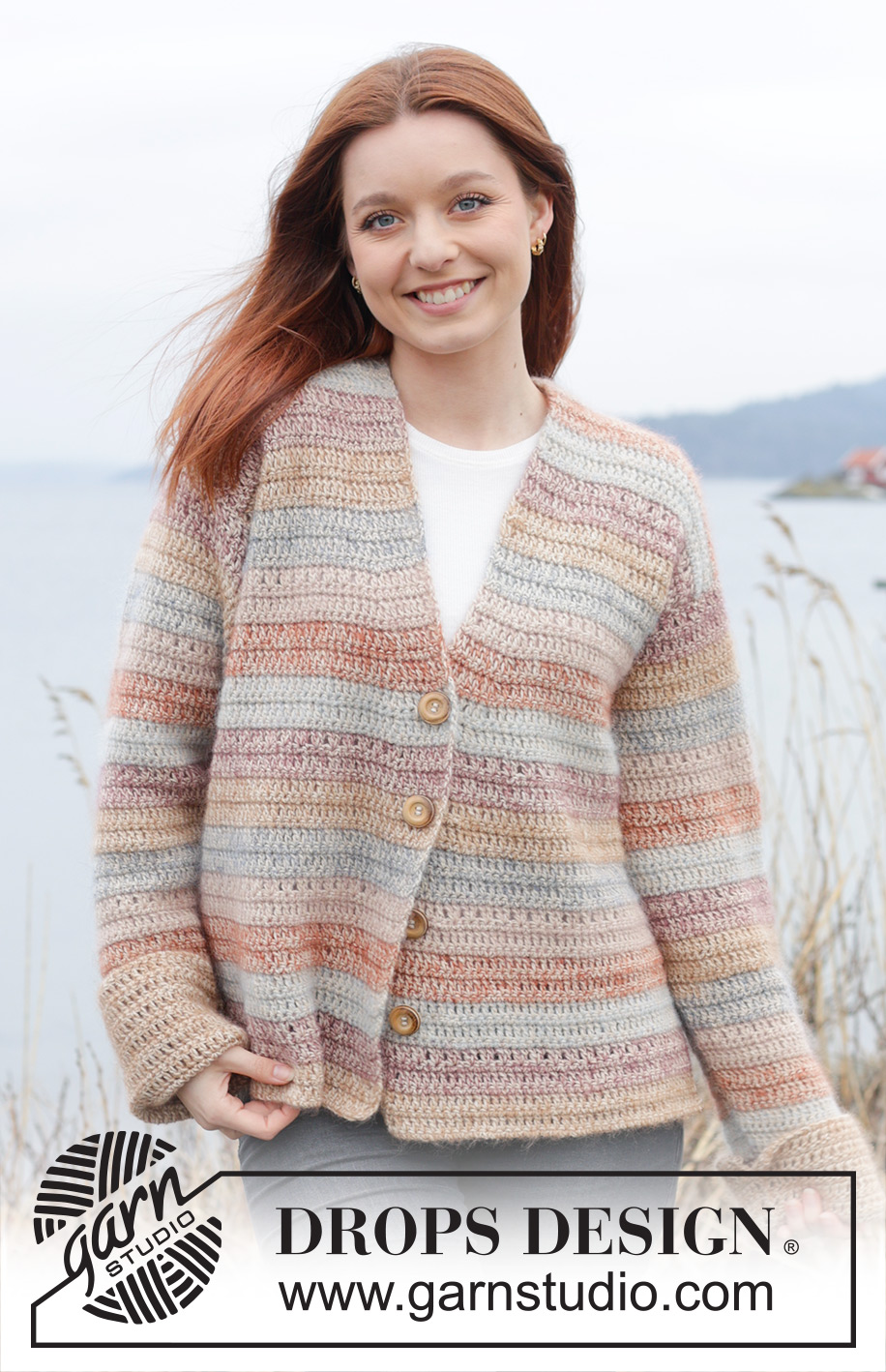

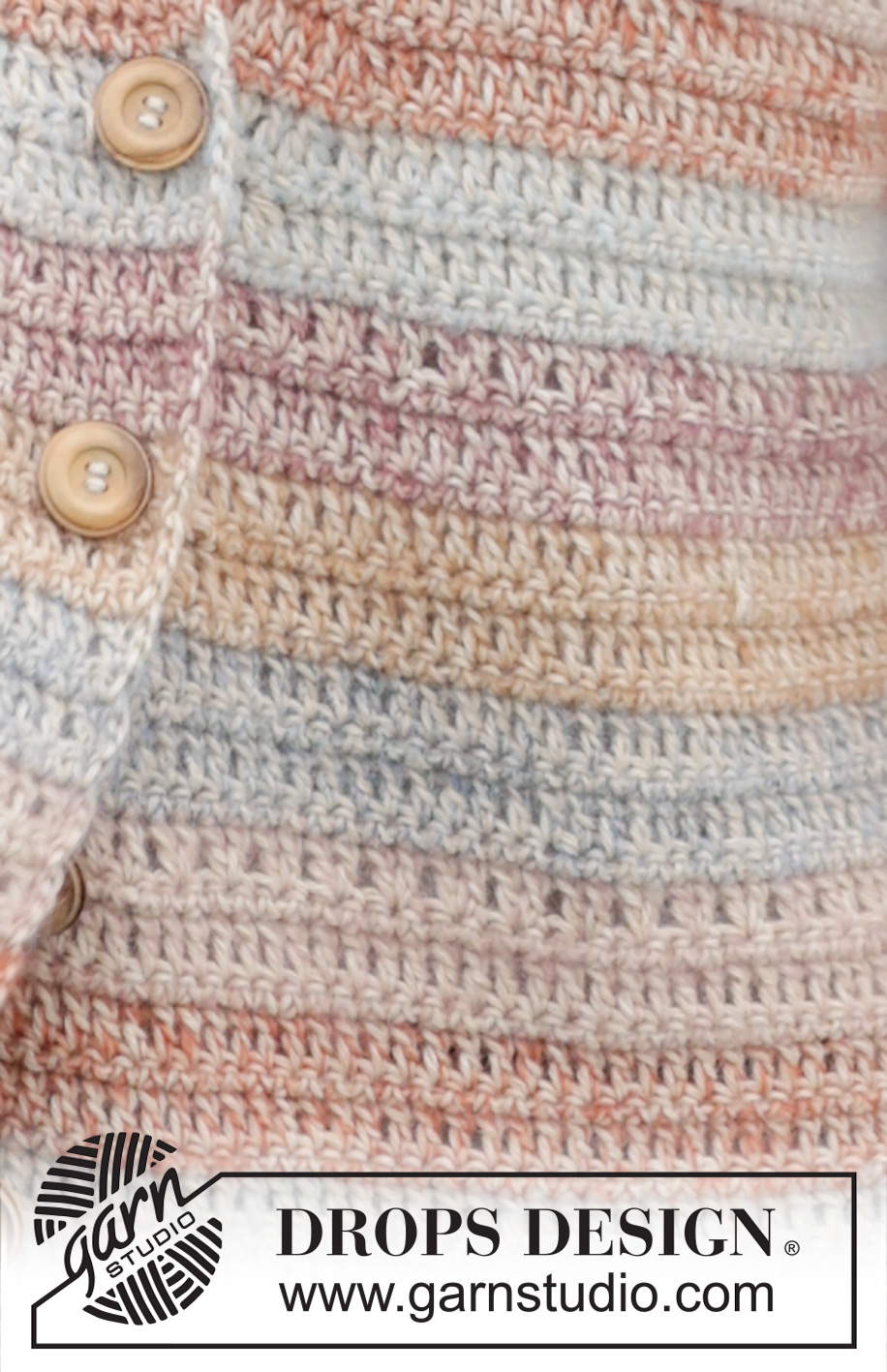

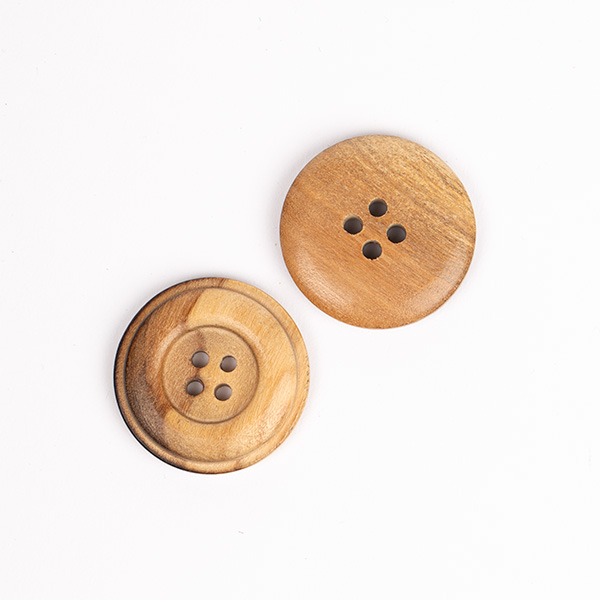

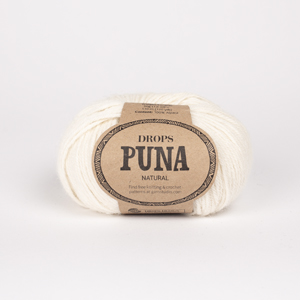
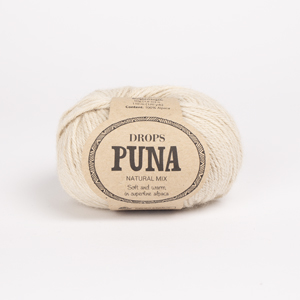
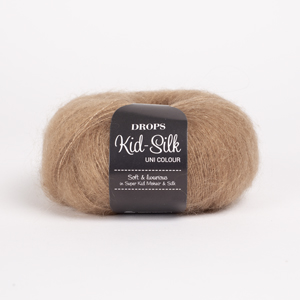
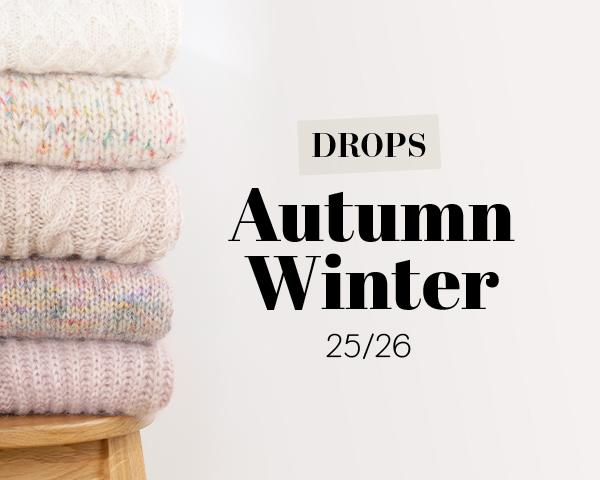

















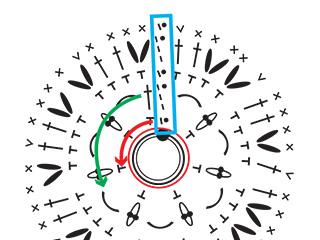



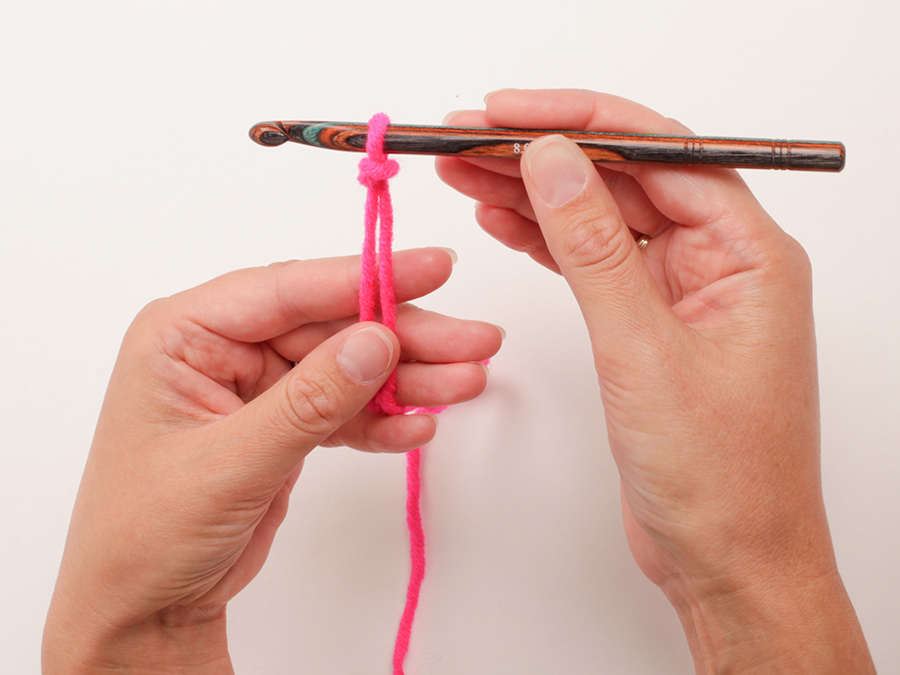
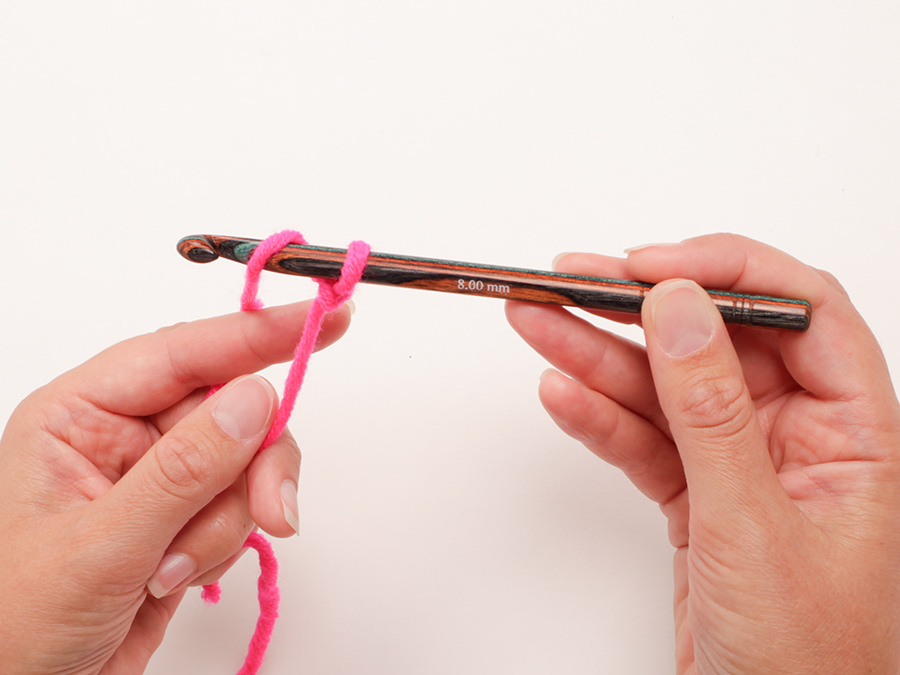

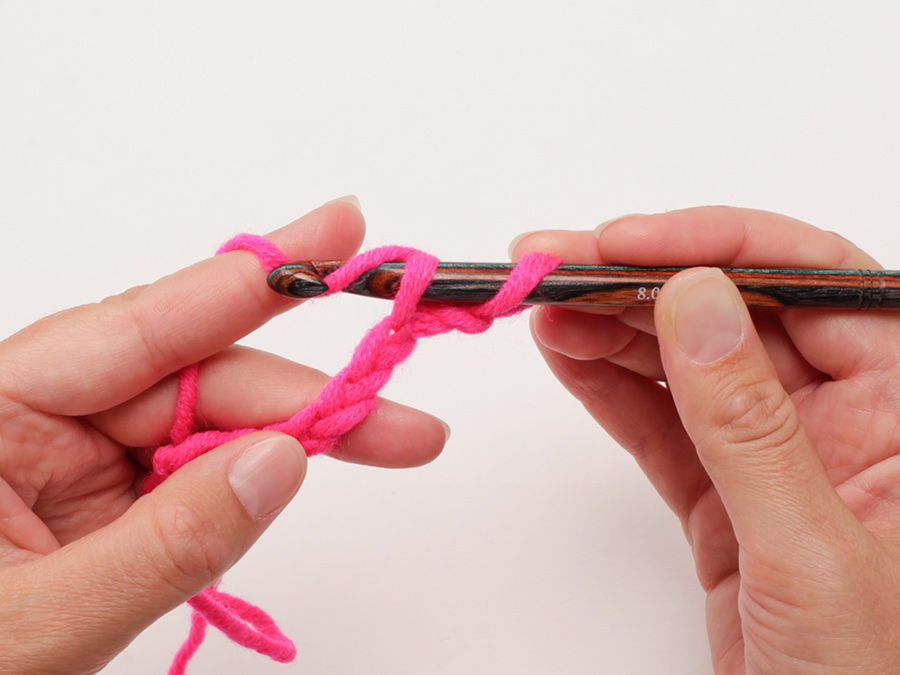
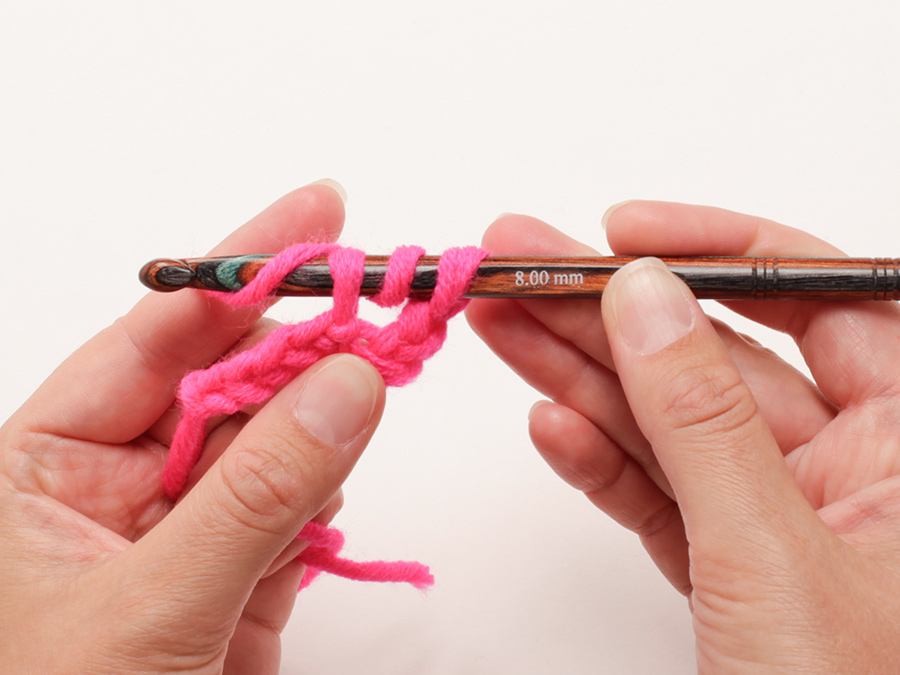
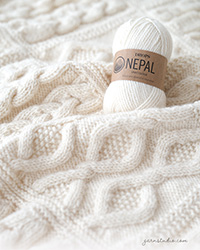
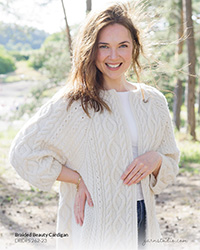
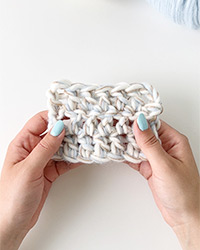
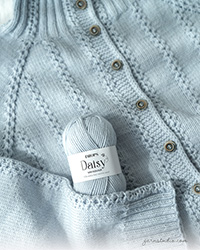
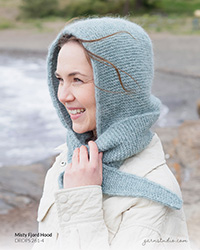

Post a comment to pattern DROPS 245-29
We would love to hear what you have to say about this pattern!
If you want to leave a question, please make sure you select the correct category in the form below, to speed up the answering process. Required fields are marked *.